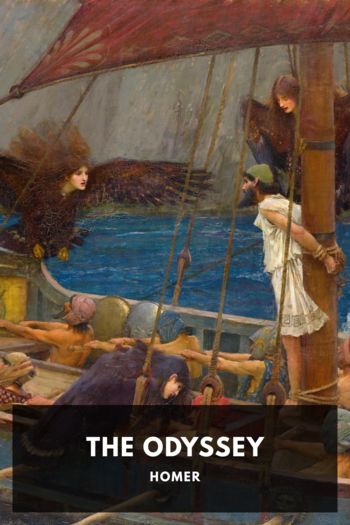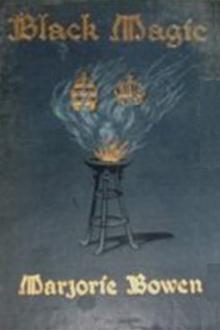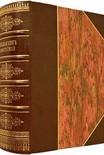The Wrecker, Clive Cussler [book club suggestions .TXT] 📗

- Author: Clive Cussler
Book online «The Wrecker, Clive Cussler [book club suggestions .TXT] 📗». Author Clive Cussler
And the stranger came back to Jersey City, muffled against the Hudson wind.
He reminded Wong that accepting an advance was a promise to deliver.
Wong reminded the stranger that he had promised to pay whatever he needed.
“Five thousand dollars when the job is done. Will that do you?”
“Very good, sir.” Then, feeling unusually bold because the stranger truly needed him, Wong asked, “Are you an anarchist?”
“Why do you ask?” the stranger asked coldly.
“Anarchists like dynamite,” Wong answered.
“So do labor strikers,” the stranger answered patiently, proving that he truly needed Wong Lee and only Wong Lee. “You know the expression ‘the proletariat’s artillery’?”
“But you do not wear workman’s clothes.”
The Wrecker studied the Chinaman’s battered face for a long minute, as if memorizing every scar.
Even though the laundry counter separated them, Wong suddenly felt they were standing too close.
“I don’t care,” he tried to explain. “Just curious,” he added nervously.
“Ask me again,” said the stranger, “and I will remove your other eye.”
Wong Lee backed up a step. The stranger asked a question, watching Wong’s battered face as if testing his skills.
“What will you need to make the biggest bang possible out of twenty-five tons?”
“Twenty-five tons of dynamite? Twenty-five tons is a lot of dynamite.”
“A full boxcar load. What will you need to make the biggest explosion?”
Wong told him precisely what he needed, and the stranger said, “You will have it.”
On the ferry back to Manhattan Island, Charles Kincaid stood out on the open deck, still muffled against the cold wind that scattered the coal smoke normally hanging over the harbor. He could not help but smile.
Striker or anarchist?
In fact, he was neither, despite the fear-mongering “evidence” he had taken pains to leave behind. Radical talk, rabble-rousing posters, diabolical foreigners, the Yellow Peril that Wong Lee’s body would soon furnish, even the name Wrecker, were all smoke in his enemies’ eyes. He was no radical. He was no destroyer. He was a builder.
His smile broadened even as his eyes grew colder.
He had nothing against the “favored few.” Before he was finished, he would be first among them, the most favored of all.
21
ISAAC BELL AND ARCHIE ABBOTT CLIMBED ON TOP OF A BOXCAR filled with dynamite to survey the intercontinental freight terminal that carpeted Jersey City’s Communipaw District. This was the end of the line for every railroad from the West and the South. Freight cars that had traveled two and three thousand miles across America stopped at the New Jersey piers one mile short of their destination, their way blocked by a stretch of water known to mariners as the North River and called by everyone else the Hudson.
The boxcar stood on the powder pier, a single-tracked wharf reserved for unloading explosives. But they were close enough to see the main terminal that thrust into the Hudson River on six-hundred-foot finger piers. Four freight trains were strung out on each pier waiting to be rolled onto sturdy wooden barges and floated across the river. They carried every commodity consumed by the city: cement, lumber, steel, sulfur, wheat, corn, coal, kerosene, and refrigerated fruits, vegetables, beef, and pork.
A mile across the water, Manhattan Island rose out of the smoky harbor, bristling with church steeples and ships’ masts. Above the steeples and masts soared the mighty towers of the Brooklyn Bridge and dozens of skyscrapers, many newly finished since Bell’s last visit only a year earlier. The twenty-two-story Flatiron Building had been surpassed by the Times Building, and both were dwarfed by a six-hundred-foot steel frame being built for the Singer Sewing Machine Company’s new headquarters.
“Only in New York,” boasted Archie Abbott.
Abbott was as proud as a Chamber of Commerce promoter, but he knew the city inside out, which made him Bell’s invaluable guide.
“Look at that boat flying the flag of the Southern Pacific Railroad even though she is three thousand miles from home plate. Everyone has to come to New York. We have become the center of the world.”
“You’ve become a target,” said Bell. “The Wrecker got you in his sights the instant Osgood Hennessy sealed his deal to take control of the Jersey Central, which gained him access to the city.”
The harbor vessel that had sparked Abbott’s civic pride was a long, low-in-the-water steam lighter, a materials and work vessel considerably bigger than a tugboat. She belonged to the newly formed Eastern Marine Division of the Southern Pacific Railroad and flew her colors more boldly than the local work vessels plying the Port of New York. A brand-new vermilion flag snapped in the breeze, and four red rings, bright as sealing wax, circled her soot-smeared smokestack.
Even her old name, Oxford, had been painted over. Lillian I now circled her cruiser stern. Hennessy had renamed every lighter and tugboat in the Eastern Marine Division fleet, Lillian I through Lillian XII, and had ordered SOUTHERN PACIFIC RAILROAD painted on their transoms and wheelhouses in bright-white letters.
“Just in case,” Archie remarked, “the Wrecker doesn’t know he’s here.”
“He knows,” Bell said grimly.
His restlessly probing blue eyes were dark with concern. New York City was the Holy Land, as Harper’s Weekly had put it, to which all railroaders longed make a pilgrimage. Osgood Hennessy had achieved that goal, and Isaac Bell knew in his heart that the Wrecker’s taunting note on the magazine’s cartoon of the railroad president was no bluff. The murderous saboteur was bent on a public attack. The next battle would be fought here.
Stone-faced, Bell watched one of the countless tugboats shunting a rail barge, or car float, past the pier. Deckhands cut the barge loose, and it continued under its own momentum to glide smoothly and accurately as a billiard ball in for a gentle landing. In the short time it took longshoremen to secure the barge’s lines, the tug had seized another barge filled with a dozen freight cars and shoved it into the strong current, urging it toward Manhattan. Similar maneuvers were being repeated everywhere Bell looked, like the moving parts in a colossal, well-oiled





Comments (0)